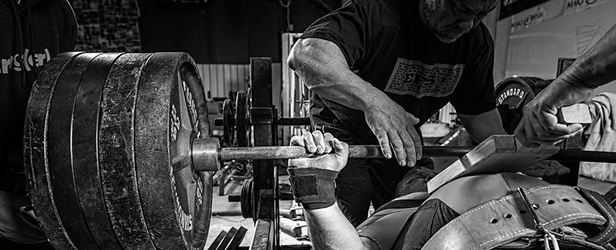
The key for athletic success begins in the weight room. Studies have shown that athletes who participate in a strength training program are faster, quicker, and more explosive, and they have fewer injuries. Several guidelines should be followed before any athlete is permitted to start a strength training program. This article will discuss those guidelines as well as recommendations for developing a successful strength training program for any sport.
The main goal of a successful strength training program is to improve the movement patterns of a particular skill. This goal can be accomplished by conducting a movement analysis to determine which muscles are being used to perform that skill. For example, in football, a quarterback and an offensive lineman use different muscles and movement patterns. Therefore, they shouldn’t be doing the same generic strength training program. Each program should be tailored to meet the demands of that skill to prevent any injuries. The physiological demands of the sport must also be determined. For example, long distance runners would benefit from developing their endurance because this is the physiological demand for that sport.
It is very important to have a general knowledge of the body’s energy systems and to know how these energy systems relate to athletic performance. If you attend a track meet and watch athletes run the 400 meter, they run fast for the first 200 meters and then slow down. This is because their energy systems aren’t being trained properly, so the energy system for that event is depleted.
Adenosine triphosphate (ATP) is the major source of fuel stored in the body. However, a limited amount is used by the muscles in a matter of seconds. Therefore, the body must re-synthesize ATP during exercise. The four energy substrates used for the production of ATP are creatine phosphate, fat, carbohydrates, and protein. The three energy systems used to produce ATP are ATP-PC, glycolytic, and oxidative.
All energy systems turn on at the same time. One system may be providing the majority of ATP for that activity while the other two are still working to produce ATP. For example, an athlete running the 400 meter will use the phosphagen and anaerobic glycolysis energy systems to complete the race.
The strength training program should be divided up into your training goals for your athletes. You must also determine how many days a week you plan to lift.
Off-season: Improving hypertrophy and maximal strength
Pre-season: Improving sport-specific power and strength endurance
In-season: Maintaining power and strength endurance
Transition: Resting to give athletes time to recover before starting another cycle
It’s also very important to determine what types of resistance exercises are going to be used in your strength training program and whether or not these exercises meet the demands of the sport you’re training. In other words, use sports-specific training.
· Power lifts
· Multi-compound lifts
· Core lifts
· Assistant exercises
· Dumbbells
· Functional training
· Machines
· Static or dynamic stretching
· Plyometrics
In order to prevent injury and early fatigue in your athletes, I recommend the following exercise order. The order of exercises should be power, core, and assistance. The power clean or any other power movement should be the first lift in your workout. The reason for this is that power lifts are very taxing on the body and if an athlete is too tired to perform the lift with proper technique, the athlete could be seriously injured. The workload and repetitions are important components of your strength training program as well.
The volume of a strength training program is important. It’s defined as the total amount of weight lifted in a weight training exercise. For example, if an athlete does 3 sets of 5 repetitions using 225 lbs, the total weight (volume) lifted is 3375 lbs.
Rest periods
Athletes should be given the proper rest period between sets to ensure that there is adequate time to replenish the proper energy systems used for their training goals. It is only when these systems are replenished that athletes will be able to perform the required number of repetitions for successful gains in strength. If athletes aren’t given adequate rest periods between sets, they won’t be able to perform the repetitions required to achieve that level of strength. The consequence of this could lead to serious injury, burn out, and frustration on the athletes’ part because they don’t understand why they’re missing repetitions.
Below are guidelines for proper rest between sets.
· Maximal strength training places enormous stress on the neuromuscular system. This stress requires longer rest intervals between sets and should last between 2–6 minutes.
· Resistance training for power training demands a high quality of movement. Short rest intervals will compromise lifting technique. Rest periods of 2–5 minutes are recommended for power lifts.
· Rest intervals of 30 seconds to 1.5 minutes are recommended for hypertrophy.
· Rest intervals for improvements in strength endurance should be less than 30 seconds.
Program errors
· Too many strength training programs are generic, which means that everybody, regardless of sport or position, is doing the same program.
· Too many programs are borrowed from strength programs at other colleges and universities. Their goals for their athletes are going to be different from yours. In addition, the age and lifting maturity of the athletes will be different.
· There isn’t enough emphasis placed on using proper form and utilizing proper lifting technique.
· Athletes shouldn’t be lifting weights in the morning before school, during school, or after school. This will only lead to overtraining and will diminish maximal gains in strength.
· Athletes shouldn’t be pushed in any exercise program to the point that they get sick. If this happens, you need to evaluate your training programs. This isn’t a result of the athletes working too hard.
· Programs change from the off-season to the pre-season to in-season to the transition phase.








